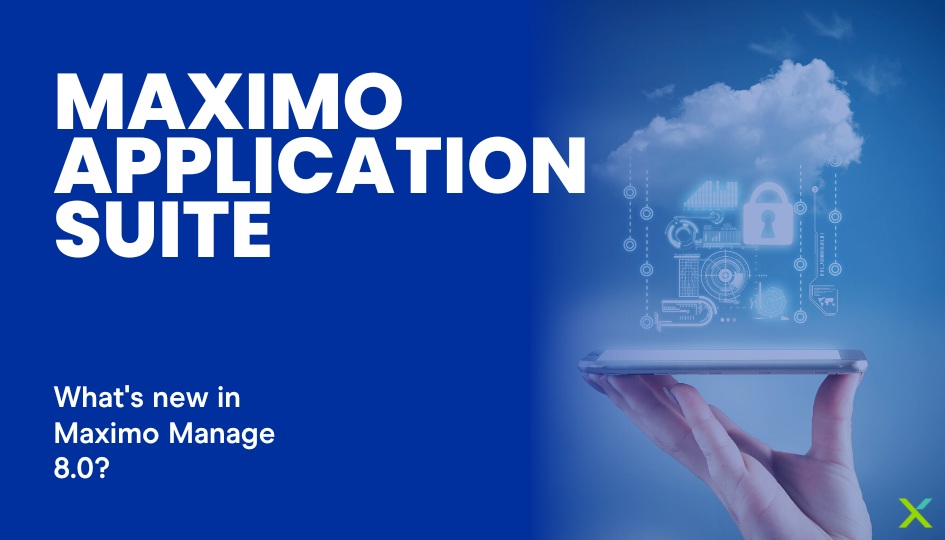
One of the most valuable benefits of the Geonexus Integration Platform is the ability to move to new versions of edge systems without the fear of your integration not supporting them. Our team is focused on continuously improving the Geonexus Integration Platform to keep up with frequent updates to our supported edge systems. To that end, we understand that many of our customers rely on us to share what we are seeing regarding those edge system updates and to communicate what those changes mean for the Geonexus Integration Platform. This blog is an update addressing the newest version of IBM Maximo – Maximo Manage 8. From our perspective, it is important to note that the Geonexus Integration Platform supports Maximo Manage 8 out of the box and that the updated version changes virtually nothing in the way our platform integrates with Maximo. That being said, there are some noteworthy additions to Maximo that deserve mention.
To be blunt, Maximo Manage 8 probably isn’t going to drastically change the way you use Maximo, but it will make the process more enjoyable. Instead of making major changes to how the system works, IBM is refining and upgrading Maximo to be more user-friendly and accessible across the board. That’s great for everyone, but it’s especially useful for the utilities that depend on Maximo for their asset management needs – and for those integrating with other systems.
This blog explains how Maximo Manage 8 will enhance your workflow and may simplify the integration process with Geonexus even more. Let’s dive in.
The first major change is the name of the product. Maximo Asset Management has been renamed IBM Maximo Manage, and many of the add-ons that are also included with Maximo Application Suite (MAS) have been renamed as well. A full list of MAS components, add-ons, and their legacy names can be found on the Maximo documentation page.
Additionally, the system’s user interface has received a cosmetic facelift and new accessibility features. While the core layout of the UI is functionally very similar to version 7.6, it’s taken on a more modern design language that is applied throughout the system. This cohesive design language brings Maximo up to speed with other systems that have adopted more minimalist, flat UI designs in recent years.
On the accessibility side of things, Maximo Manage 8 can now be navigated using only a keyboard. This is an important function for users that can’t use a mouse with precision, and it allows for quicker navigation using an expansive set of keyboard shortcuts. Screen reader functionality is also built into Maximo Manage 8, enabling users who have difficulty seeing to use Maximo with far less difficulty. More information on these new features can be found on IBM’s Accessibility page.
There are all kinds of new features available behind the outward-facing changes to Maximo Manage 8, all of which are focused on streamlining the user experience. For example, Maximo Manage has historically relied on “add-ons” to add extra functionality where needed, but some were only available as separate purchases and not included with past versions of Maximo Manage. Maximo Manage 8 changes things up by including more add-ons like Utilities, Health, and Spatial without the need for additional licenses or installations.
Maximo Mobile is a new mobile application introduced alongside Maximo Manage 8 that lets field workers access Maximo Manage from mobile devices. The app uses REST APIs to download data from Maximo Manage onto users’ devices. Maximo Mobile is available for both iOS and Android devices, so you can check out data visualization on iPads or manage work orders from either iPhones or Android smartphones. This page from IBM includes overviews of all the other functions inside the app, but it should be clear how this addition to Maximo Manage can enhance mobile productivity, especially where integrated data is involved.
For a full technical overview of the new features available in Maximo Manage 8, see IBM’s own summary.
Maximo Manage 8 has introduced support for API keys – a new way to remotely log in to Maximo that doesn’t require a username and password. API keys can be used to make REST API calls without:
When an API key is created, it’s registered in Maximo for the user it was specifically created for, so every time that API key is used it will invoke security checks based on that user. For many organizations (especially those that need to carefully manage who accesses their Maximo data) API keys are a more secure and more efficient solution for logging in and making changes inside Maximo.
Thanks to this update, organizations using Maximo Manage 8 now have more data management tools at their disposal than ever before. With updated UI features, more included add-ons, more secure login methods, and continued compatibility with the Geonexus Integration Platform, Maximo Manage 8 is full of changes that are sure to improve your workflow.
At Geonexus our mission is to ensure integrity and reliability of enterprise data to support effective decision making. Our Integration Platform is an enterprise-grade integration solution that is easy to use, reliable, and includes out-of-the-box connectors for Esri® ArcGIS®, IBM® Maximo, SAP®, ABB® Ellipse, Oracle® Utilities, and other leading enterprise systems. Asset-intensive organizations across the globe use the Geonexus Integration Platform in industries including utilities, telecommunications, pipeline, transportation, and government.